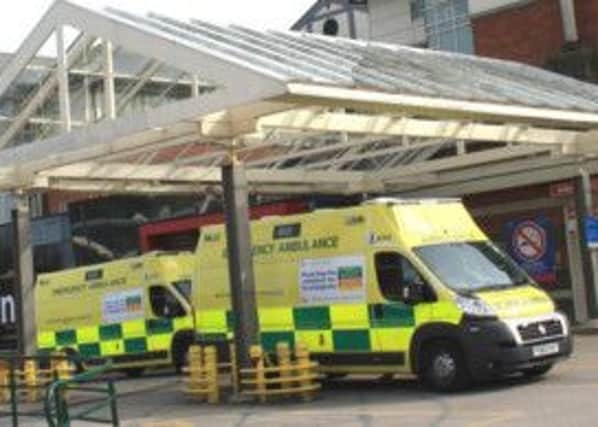Breath tube ‘was wrongly inserted into 999 patient’


Neal Gilligan, 51, collapsed in a cafe in St Annes on December 11, 2013, and was shocked with a defibrillator by paramedics on the way to hospital.
An inquest into his death at Blackpool Coroners’ Court heard that while being resuscitated at Blackpool Victoria Hospital, anaesthetist Dr Sharith Ghabina attempted four times to intubate him.
Advertisement
Hide AdAdvertisement
Hide AdThe procedure involves placing a tube down the trachea into the airways, but the tube was accidentally fed in to the patient’s stomach, meaning vital oxygen did not reach his lungs.
Medical expert Professor Charles Deakin told the hearing: “Endotracheal (ET) intubation has a number of risks, the main one being unrecognised oesophageal intubation which will kill the patient if not rapidly corrected.”
The error was compounded by Dr Ghabina’s failure to remove the tube, despite being repeatedly asked by a doctor and senior resuscitation staff whether the tube was correctly in place.
Mr Gilligan, of Park Road, Lytham, had been diagnosed with a narrowing of the coronary arteries, which required triple bypass surgery.
Advertisement
Hide AdAdvertisement
Hide AdHe was critically ill on arrival at hospital with three echocardiograms showing no activity in his heart.
There was also blood in his airways, which made the tubing difficult.
Anthony Freestone, head of resuscitation at BVH, said: “Dr Ghabina arrived shortly after the automatic CPR machine had been activated.
“Securing the airway is standard practice once the machine has started.
Advertisement
Hide AdAdvertisement
Hide Ad“After speaking to relatives I returned to the room and I noticed blood was coming out of the ET tube. I looked at the carbon dioxide monitor and saw the reading was abnormal.
“I escalated this to Dr Ghabina. He gave me an explanation that it could be because the patient had a pulmonary embolism.
“I went to update the family and when I got back I noticed the patient’s stomach was distended.
“One reason for this could be air going into the stomach. This was the second time I alerted Dr Ghabina to this.
Advertisement
Hide AdAdvertisement
Hide Ad“I then asked for a mobile device to be brought in, to check the main carbon dioxide monitor was working properly.”
Prof Deakin said: “It’s fair to say airway management can be challenging in emergency situations.
“But to have carried on to a fourth attempt at intubation was not the best plan.
“After two he should have asked for help. As for the diagnosis of whether the tube was in the right place, no one method is foolproof.”
Advertisement
Hide AdAdvertisement
Hide AdHe added: “The unusual carbon monoxide reading, taken with the concern expressed by individuals, the correct procedure would be to remove the tube.
“You absolutely must remove it if any doubt.
“I would expect someone who had done two-and-a-half years training, as Dr Ghabina had, to correctly ascertain that the tube was misplaced.
“This is bread and butter work for anaesthetists, despite it being a difficult procedure.
“The steps he went through were correct, but his misinterpretation wasn’t.”
Advertisement
Hide AdAdvertisement
Hide AdDr Ghabina, who no longer works at Blackpool Victoria Hospital, said: “When I tried to insert the tube, all I could see was blood.
“I tried twice more and couldn’t see anything.
“On the fourth attempt, I used an instrument which helps you to feel the trachea wings if you can’t see, and inserted the tube.
“There was an urgency to the situation and I thought there was no alternative.
“Perhaps I acted in haste and I’m sorry about that.
“I accept the tube was misplaced. I felt any further attempt at intubation would be impossible if the tube was removed.
Advertisement
Hide AdAdvertisement
Hide Ad“I have significantly reflected on what happened and would now ask for help immediately.”
Alan Wilson, coroner for Blackpool and Fylde, recording a narrative verdict, said: “Neal Gilligan, who suffered from significant heart disease had a heart attack while at a cafe.
“Efforts were made to revive him and during the resuscitation process it was not noticed that the ET had been misplaced.”